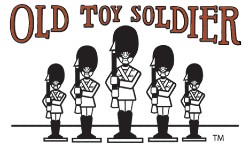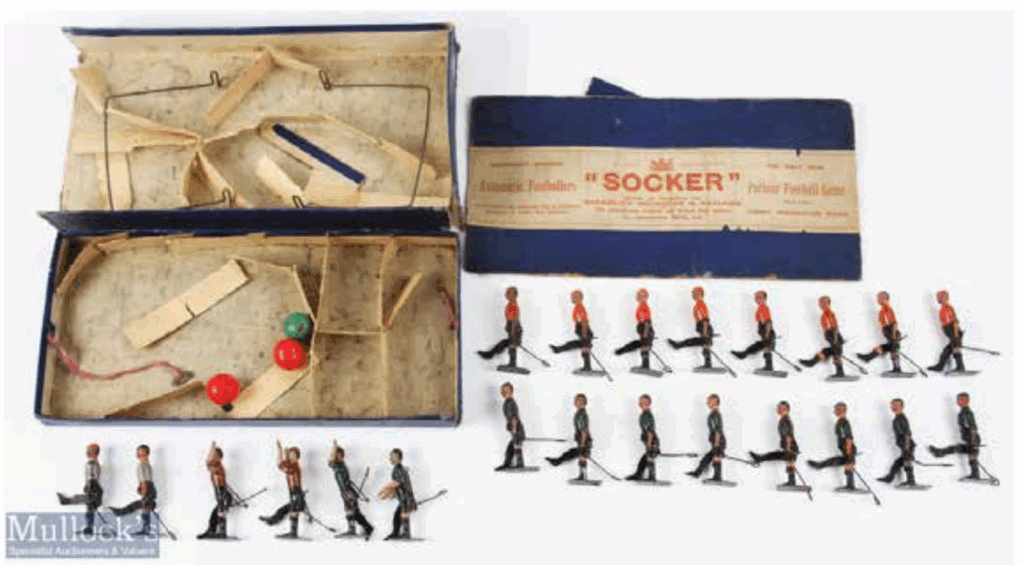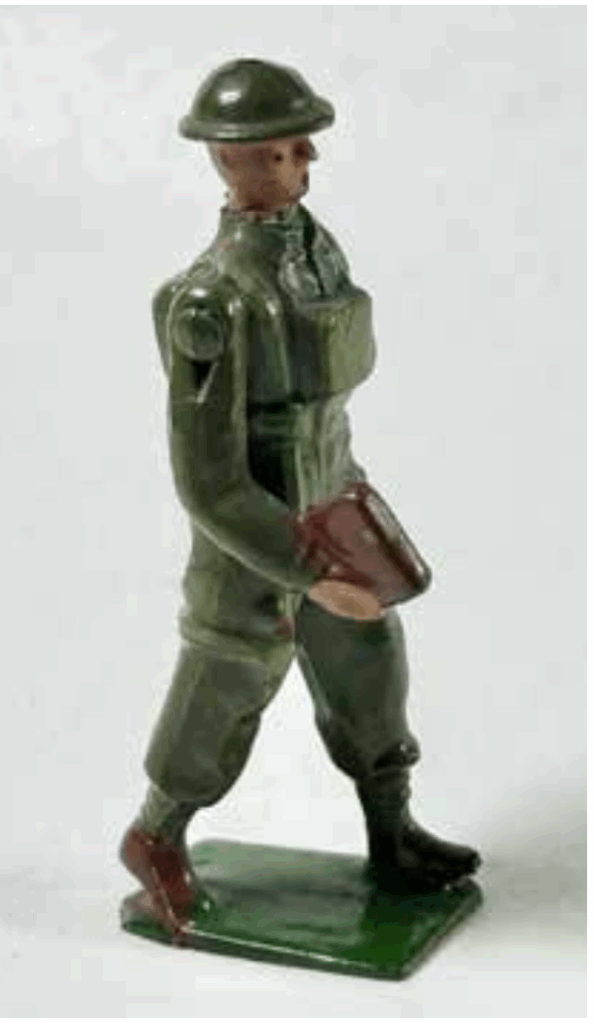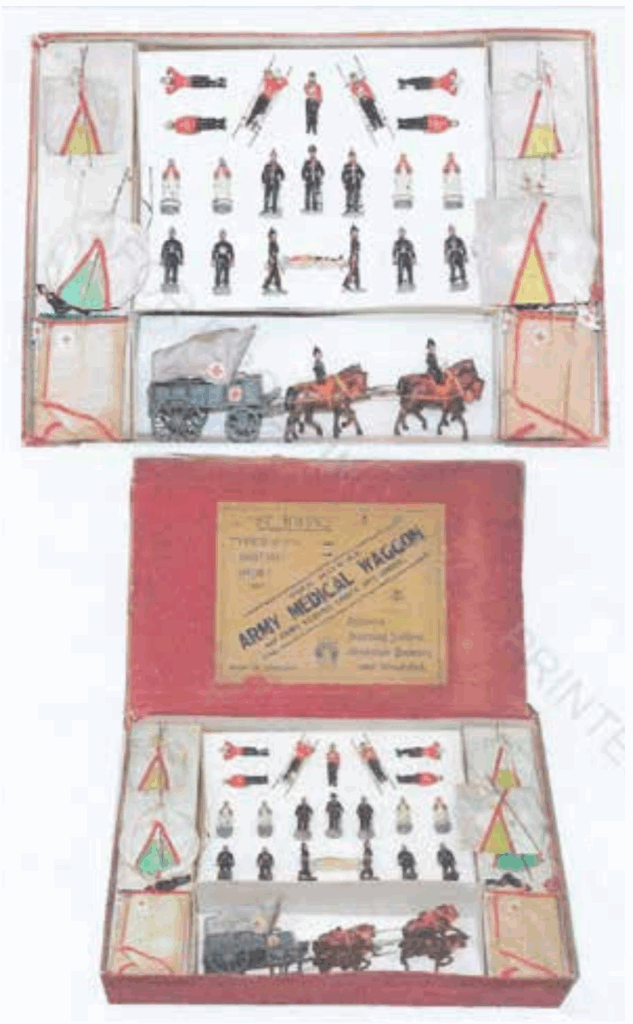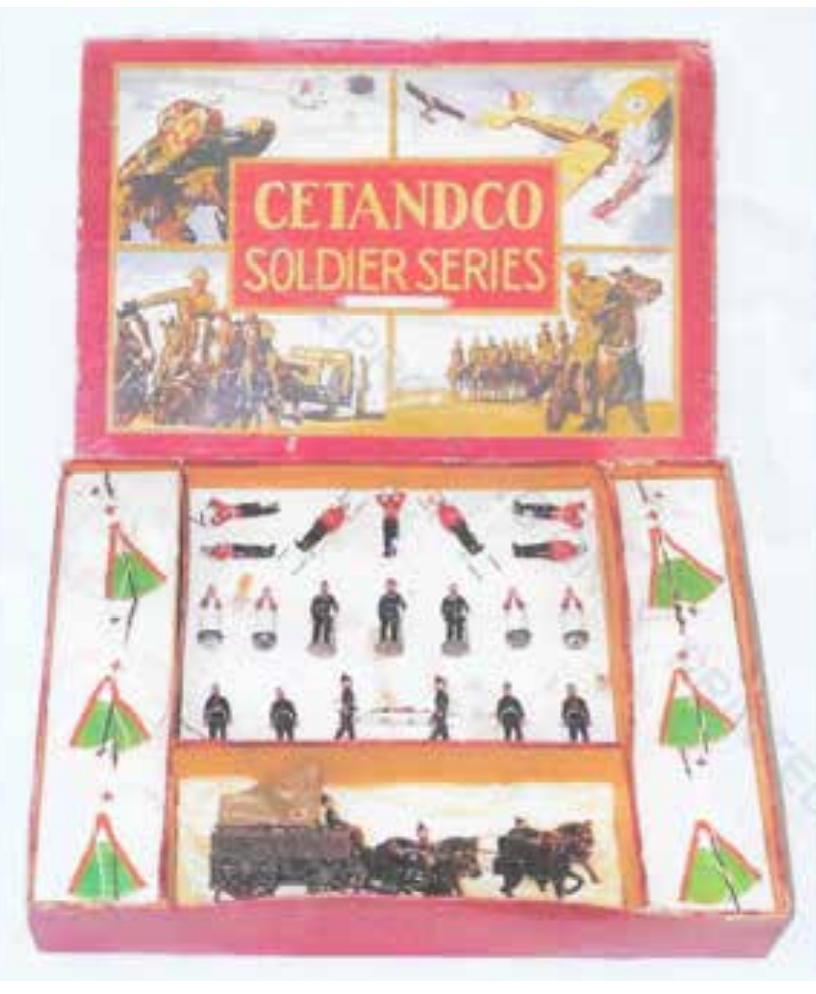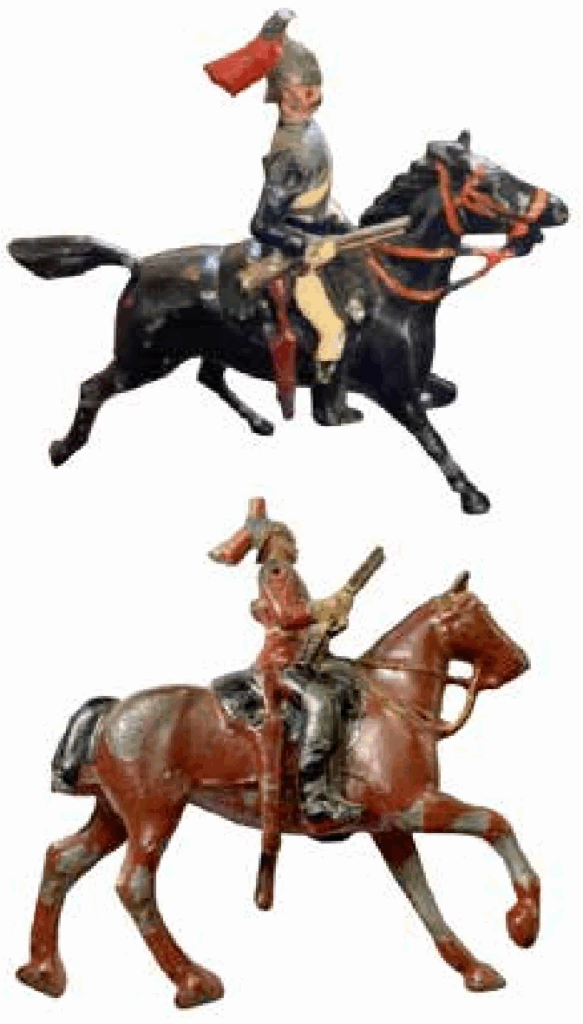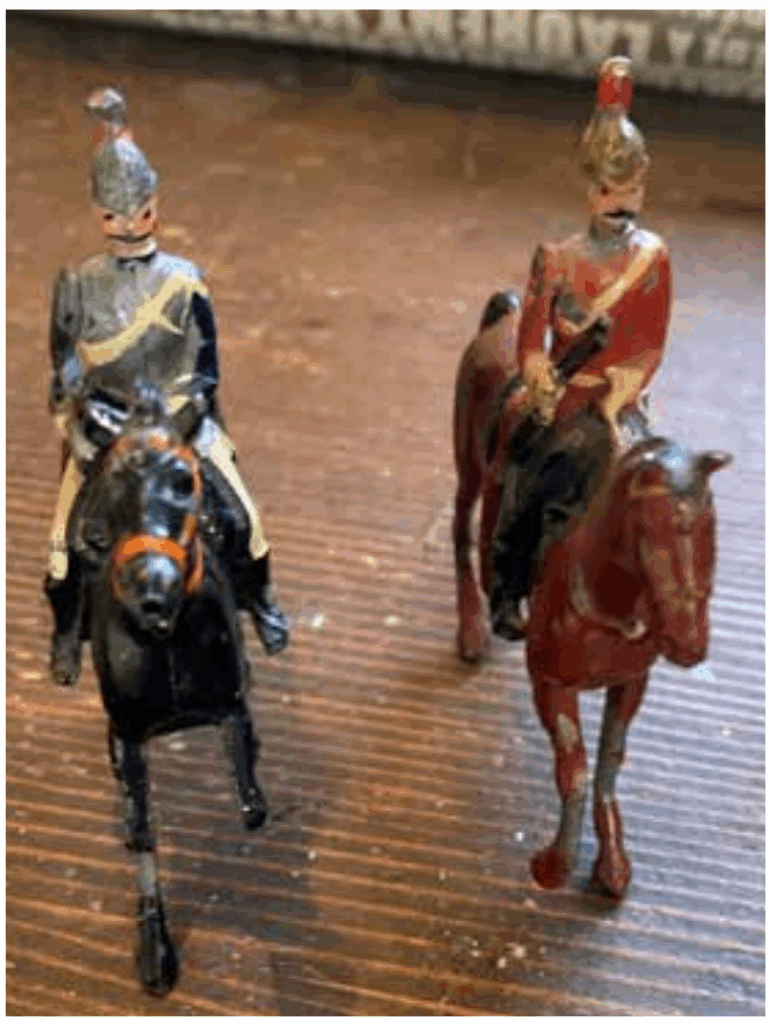Norman Joplin has been in touch regarding the footballers shown on the top of page 44 of Will Beierwaltes’ sports piece in the previous issue. These were attributed by Will to Cartwright. However, Norman points out that, in an earlier article (Vol 42, No 1) it was established that the figures as illustrated in the article, with the wire kicking mechanism linked directly to the legs, were probably made by Russell rather than Cartwright. The latter’s figures did, as Will mentioned in his article, have the trigger mechanism on the top of their heads.
The boxed set shown in the image supplied by Norman, is of a Russell made set, although the box label focusses on the fact that they have been made by Disabled Soldiers and Sailors rather than the maker’s name.
The links between Cartwright and Russell remain obscure, but Norman is still beavering away to clarify the situation. Hopefully, we can publish the results of his efforts in due course.
Following on from Will’s article on Britains Medical sets, Joe Wallis kindly supplied the image
of the extremely rare medical officer holding a
document. Only available in short-lived sets
1909, and 1910, very few of this figure were ever made by Britains. Unfortunately, it is easily forged by adding an appropriate repainted arm to the officer body that was sold with an empty-handed arm in various other sets. So, check carefully for any sign that the arm has been replaced or that the paint does not quite match before getting too excited!
Norman Joplin also chipped in with two images of the CET St Johns set mentioned in Wills article but not pictured there. The first features a Britains style label, but without the Britains name printed on it.
The second has a generic CETANDCO label, which was used on a number of different display sets marketed by this company. These sometime contained figures and other items by other makers including BMC and SR.
Peter Richards likes to keep an eagle eye out for unusual figures offered on eBay in various European countries. He spotted the following two cavalry figures. These are probably from the Britains Paris Office, presenting an unusual combination of bodies, arms and paint finishes not normally available from the London factory. A number of similar figures have tuned up in France and other countries from time to time, suggesting that these were part of the Paris Office’s large range of sets which was much less standardised than the main factory’s offerings.
